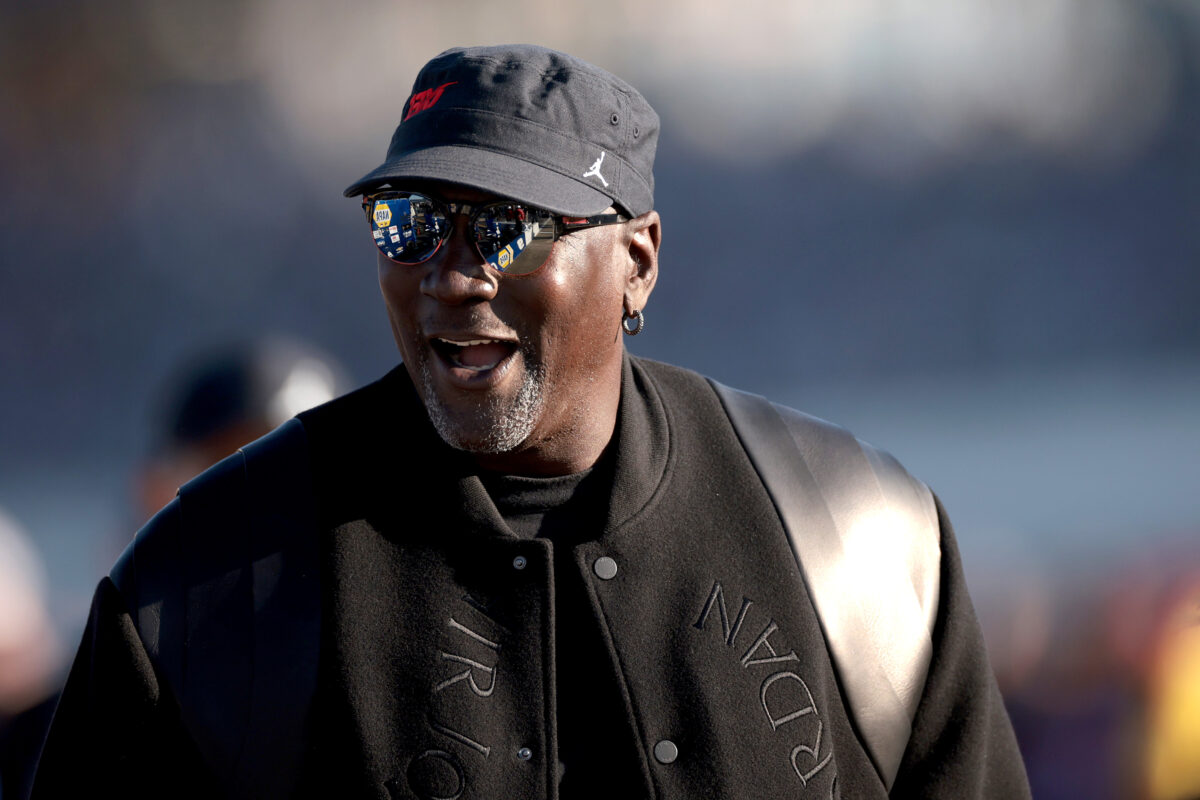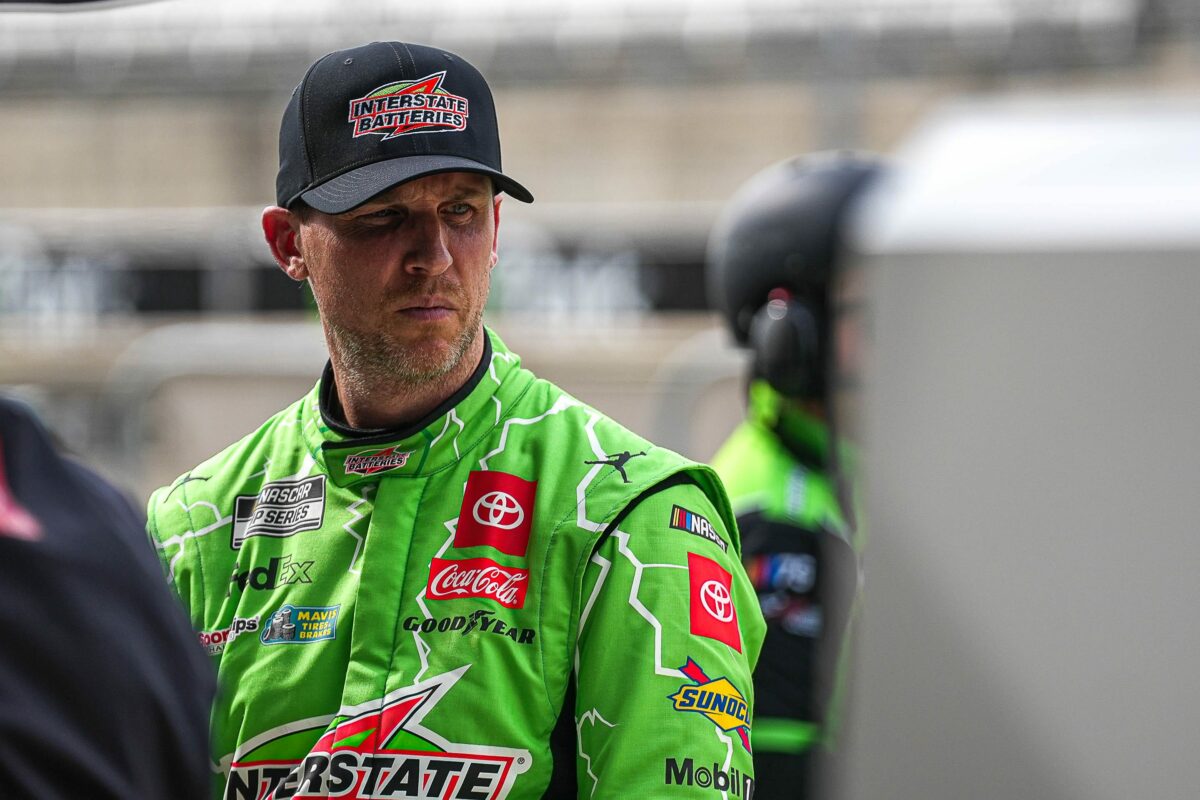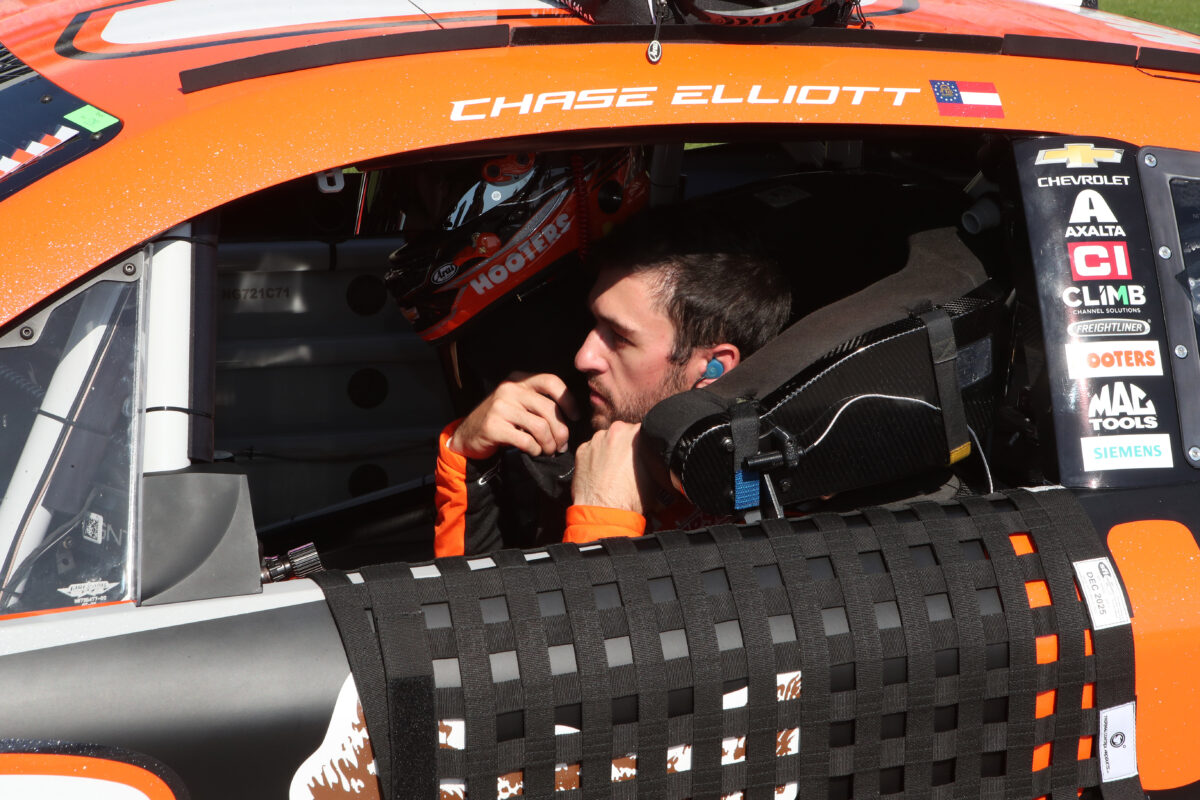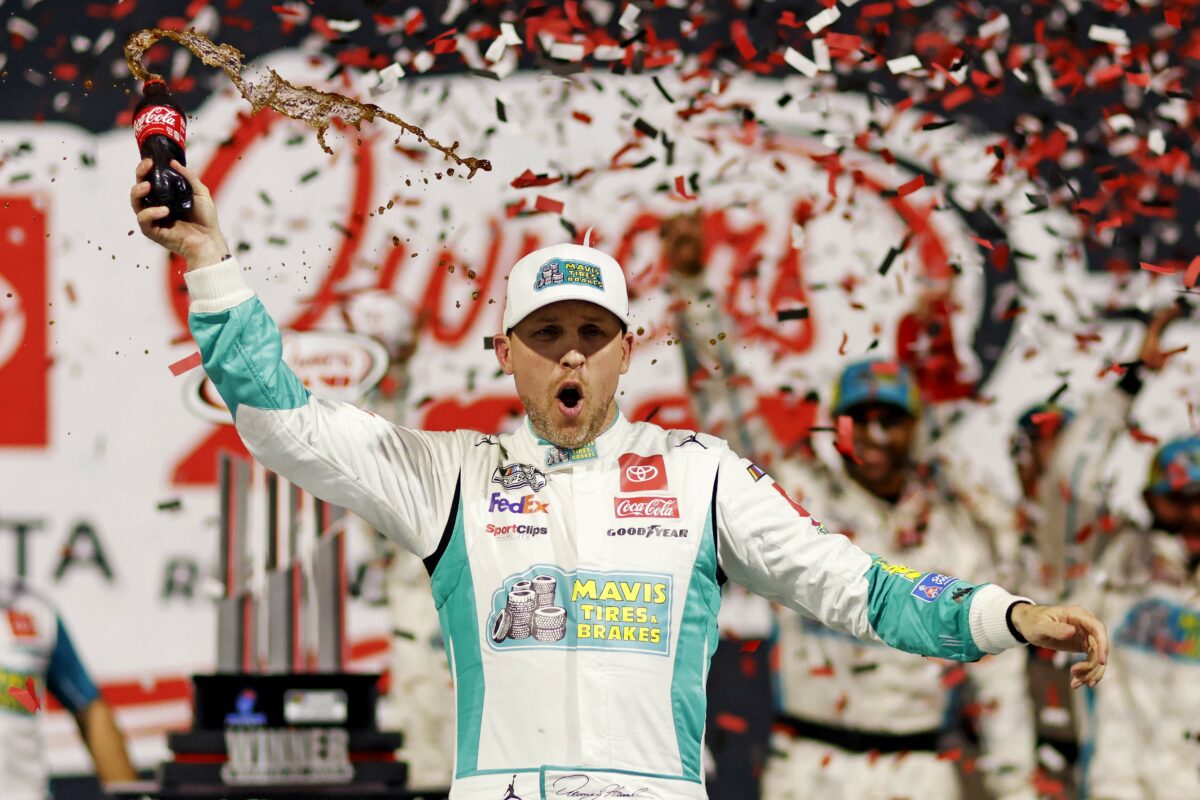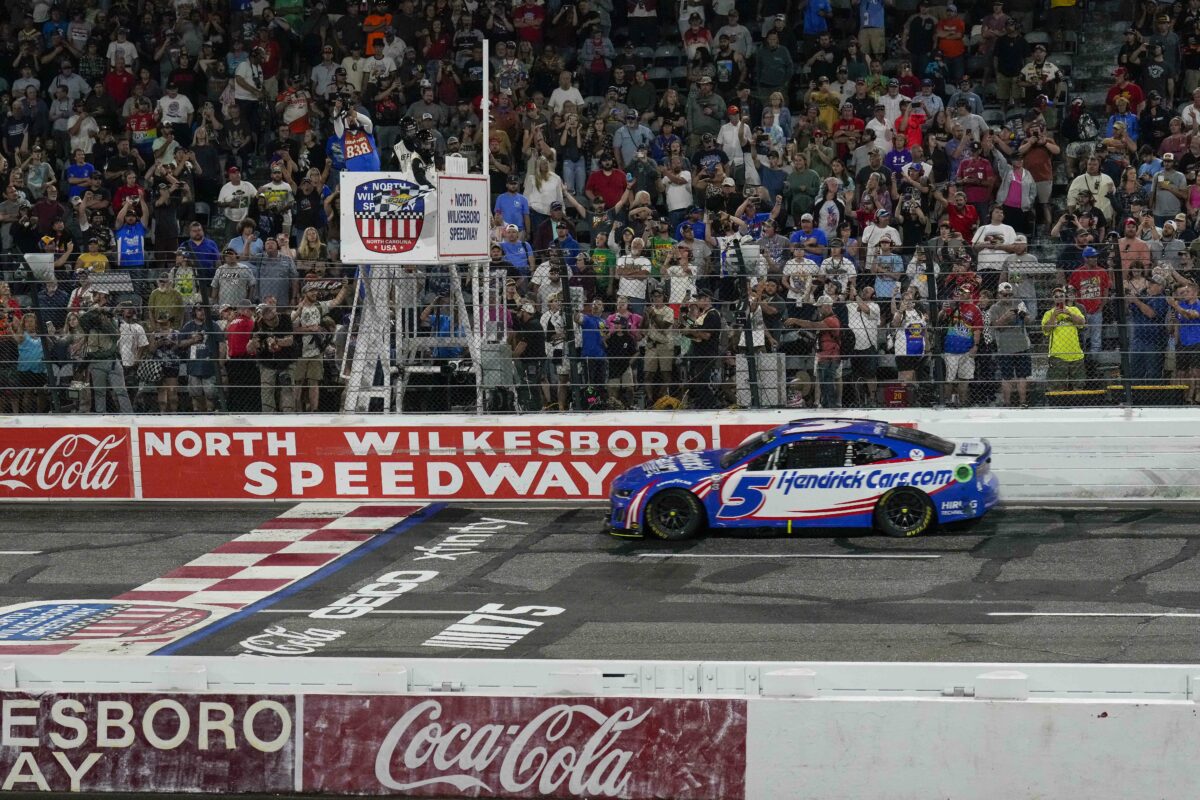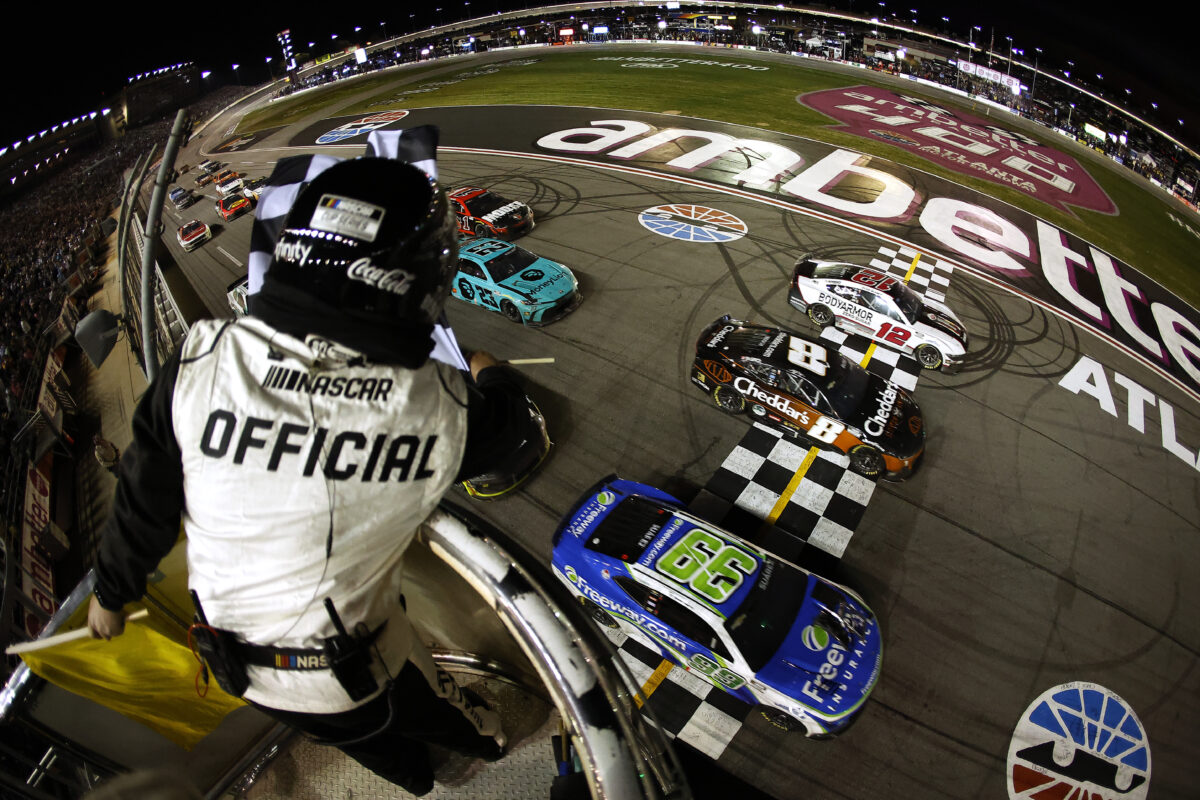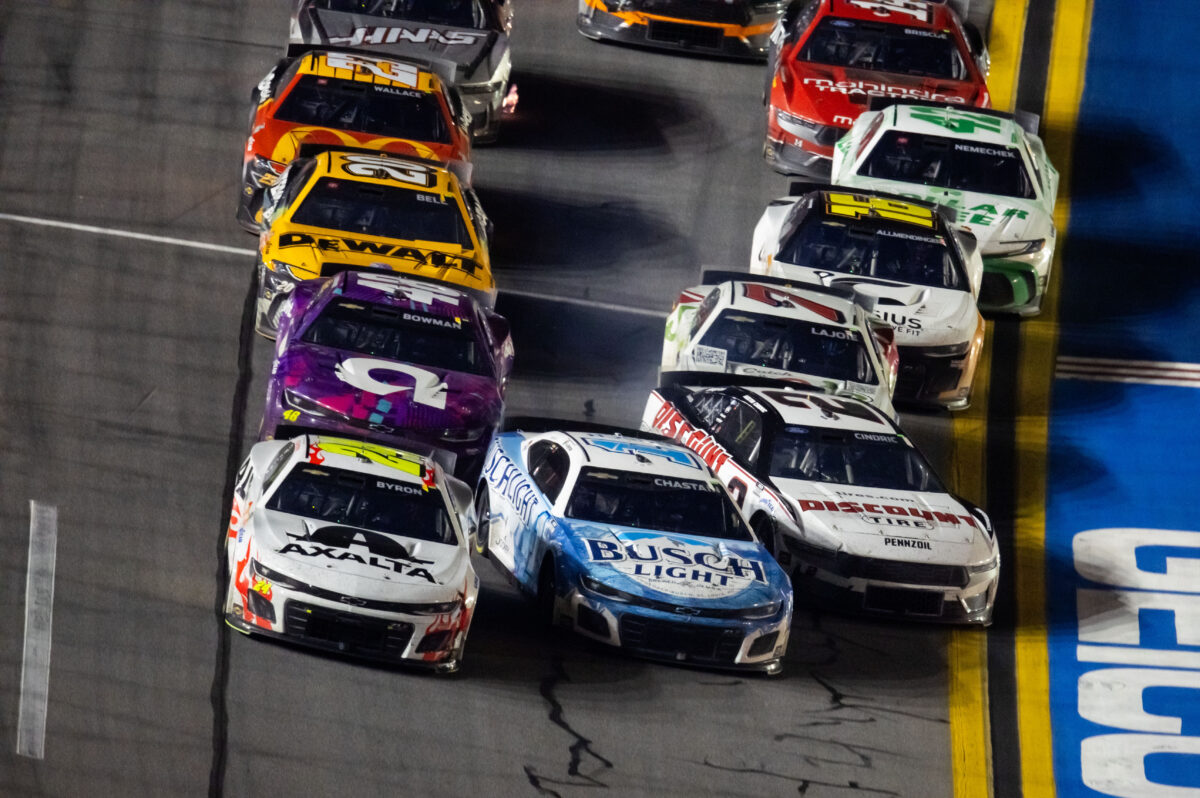NASCAR driver Corey LaJoie is thankfully OK after going for a wild ride — and a wild sideways finish — at Talladega Superspeedway on Sunday.
Chaos and big wrecks at Talladega are fairly common at NASCAR’s longest track, and Sunday’s Geico 500 was no different, and the race ended with a huge wreck as Tyler Reddick crossed the finish line for his first win of the year — and 23XI Racing’s first win with team co-owner Michael Jordan in attendance.
On the last lap of the 500-mile race, leader Michael McDowell was throwing multiple blocks while trying to maintain his position, but he ultimately ignited a multi-car crash just as cars were coming to the finish line.
Another look at the finish as Michael McDowell throws a block for the win and chaos erupts behind Tyler Reddick: https://t.co/X7errWom2M pic.twitter.com/s56Pr5q1Av
— FOX: NASCAR (@NASCARONFOX) April 21, 2024
During the wreck, LaJoie’s No. 7 Chevrolet was hit against the outside wall of the 2.66-mile track and turned on its side. The sideways car had so much momentum that it kept sliding around the track and amazingly crossed the finish line for an 18th-place finish.
The car then slowed down, flipped entirely upside down and then rolled upright again.
Corey LaJoie went for a wild ride. pic.twitter.com/Pvnpb1xSFY
— FOX: NASCAR (@NASCARONFOX) April 21, 2024
And here’s LaJoie’s view from inside the car:
Corey LaJoie's onboard pic.twitter.com/f5SzhJwOZJ
— Andrew (@Basso488) April 21, 2024
LaJoie is thankfully OK, and he explained what happened from his perspective to FOX Sports after being cleared by the in-field care center, calling it a “pretty wild ride” and noting he couldn’t see much beyond smoke.
Corey LaJoie explains what happened as he flipped on the final lap, riding the wall for part of it. pic.twitter.com/IwRPSGa9Nj
— Bob Pockrass (@bobpockrass) April 21, 2024
He said, via FOX Sports’ Bob Pockrass:
“Just never could quite get it in the right spot at the right time there at the end, and then you just know you’re just waiting to pile ’em up. Good thing I gave the belts a good ol’ tug with about three [laps] to go so I didn’t bounce around too much. …
“I did a full rotation. So I did like, left side on the ground for a bit. Then it kind of stopped. Then it flipped over, hit the roof and then landed on all fours, and the all-four hit was pretty big. Glad I slipped past the start-finish line though, so I didn’t have to run past it like I was Carl Edwards.”
What the Corey LaJoie car looked like postrace in the garage. pic.twitter.com/TdCS9Tt3kL
— Bob Pockrass (@bobpockrass) April 22, 2024
[lawrence-auto-related count=3 tag=421393221]

